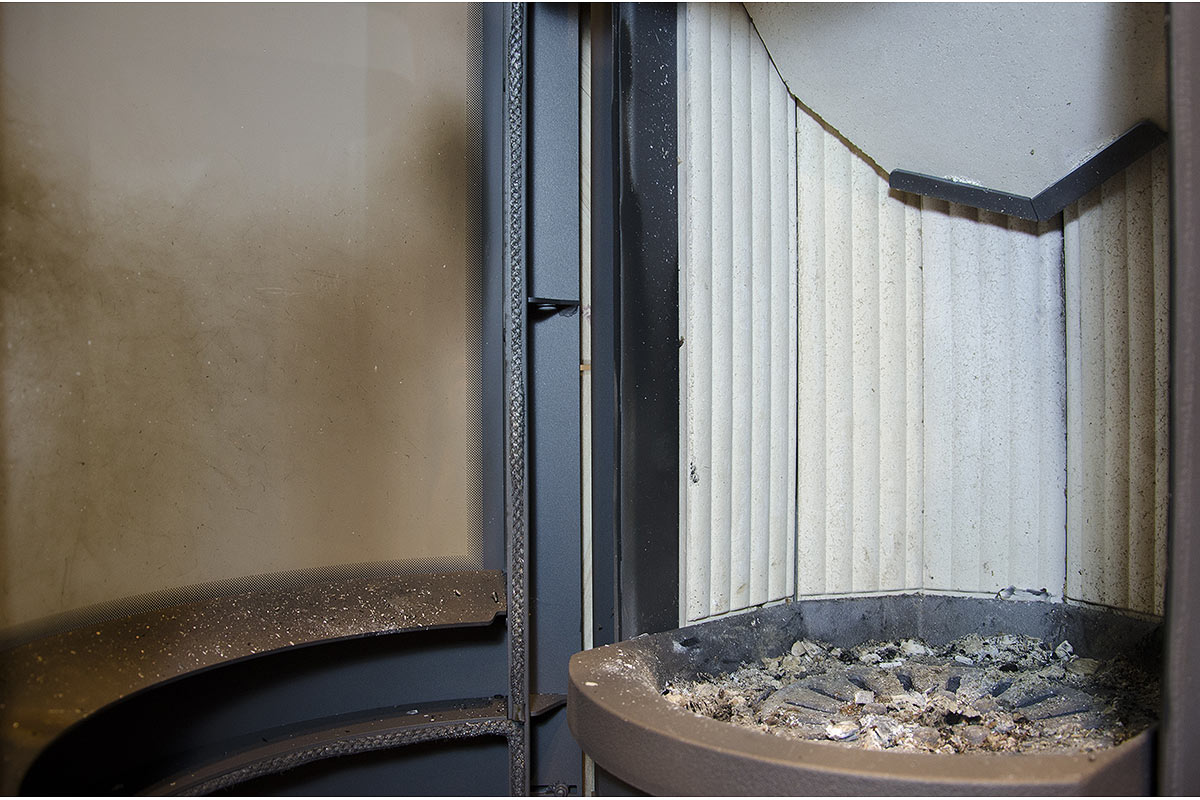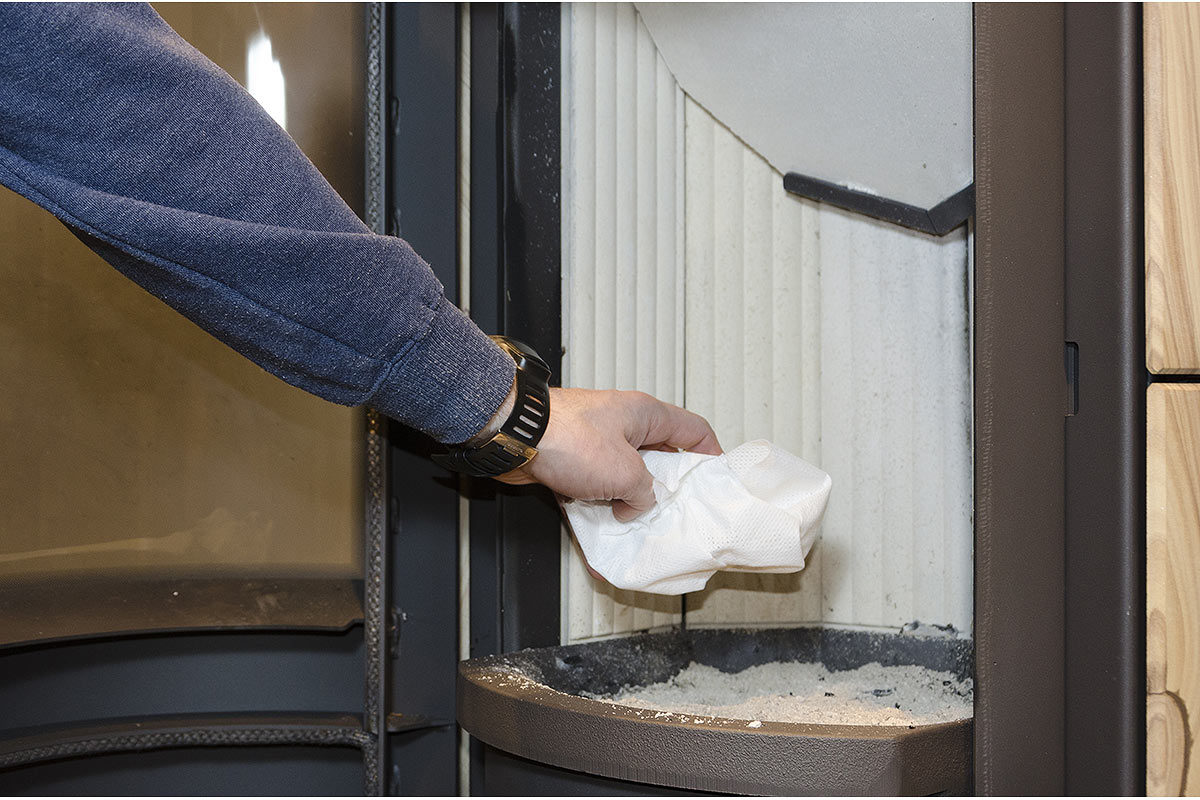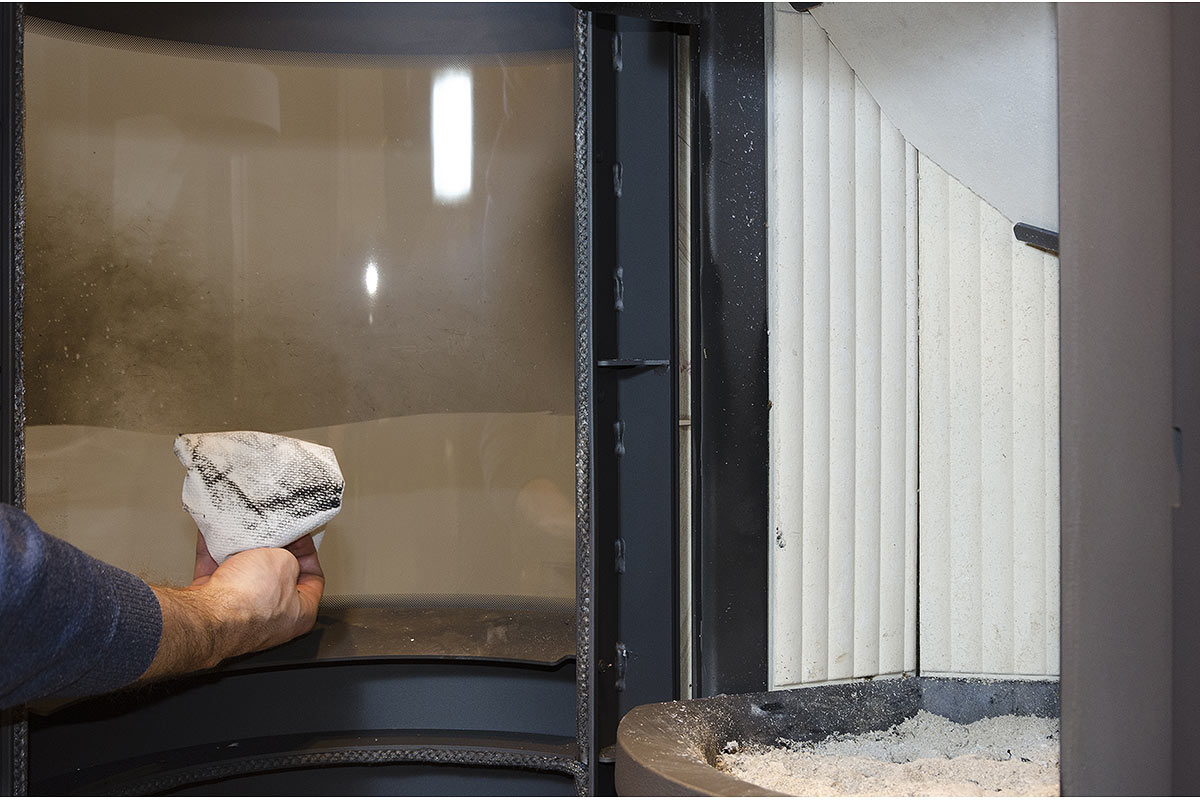Tips
The main questions and answers about stoves and heating.
It is important to ensure adequate access for cleaning and maintenance of the fireplace stove, flue and chimney from the moment of installation, if these cannot be cleaned from another location (e.g., from the roof or specifically designed doors).
Your fireplace stove is a high-quality product and no fundamental defects are expected during standard operation. It is important to regularly and carefully check and clean the fireplace stove and flue, always before and after the heating season.
All cleaning and maintenance work must only be carried out when the fireplace stove is completely cold.
Regular inspection and replacement of parts subject to wear and tear, specifically those known to require regular replacement (parts in direct contact with the fire such as chamotte tiles, seals, deflectors, etc.) is very important.
A cracked chamotte tile does not affect the function and service life of the product, as long as it does not fall out completely. Chamotte tiles also need to be replaced if completely damaged by crumbling. Follow the operating manual when replacing chamotte tiles.
We recommend replacing the seal on doors and glass depending on their condition and the amount of use of your fireplace stove, ideally every second season. However, it is necessary to ensure that seals are not burned out, damaged or degraded. Poor seals result in uncontrolled air intake and lead to unregulated combustion. Long-term thermal stress caused by overheating can lead to permanent damage to the structure of the fireplace stove.
If the glass seal is damaged, the sealing and dilatation function is compromised, and the glazing may crack.
When using chemical cleaning agents, avoid contact with the seal in order to prevent degradation.
The manufacturer is not responsible for any damage caused by the use of chemical substances.
The basic rule is to always remove cold ash from the grate of the combustion chamber.
We recommend emptying the ash tray when it is half full, to prevent the ash pile from coming too close to the grate and damaging it due to overheating. At the same time, ash can limit the inflow of air required for combustion. It is best to empty the ash tray when it is completely cool, ideally during preparation for a new heating cycle. Cleaning an ash tray or heating units without an ash tray can also be done by using a vacuum cleaner intended for vacuuming ash, with a filter for finer dirt particles.
And what do I do with the ash itself? Wood ash contains minerals, and so it can be placed in a compost bin or used as a fertilizer in your garden. This only applies to wood ash from wood that was not chemically treated.
Before emptying the ash tray, check that it does not contain hot residual fuel which could cause a fire in the waste bin. Some types of fireplace stoves have an ash tray located in a basin below the grate, without the option of side removal. In this case, the ash tray can only be removed when the heating unit is not used and cold. Access to the ash tray is possible after lifting the grate.
Fireplace stoves need to be cleaned at least once per year, after the heating season; in case of more intensive year-long operation they should be cleaned more frequently, as required. Of course, it mainly depends on how frequently you use your fireplace stove. All work must only be carried out when the fireplace stove is completely cold. When cleaning, it is necessary to remove sediment in the flue and combustion chamber. After the heating season ends, remove any freely placed deflectors in order to make it easier to access the area above them, in the direction of the flue. Remove the ceiling deflector and chamotte lining, clean them, and sweep or vacuum all dirt and residual soot and ash from the combustion chamber, as this material can absorb moisture and then cause corrosion. Cleaning (aside from glass) is carried out without water solutions – e.g., you can use a vacuum cleaner or steel brush.
After cleaning, close the fireplace stove with the appropriate sliding door when not in use.
Modifications of the heating unit are not permitted.
The vents of the exchanger should be cleaned as required, at least 1x every 3 weeks, using the steel brush provided. The amount of dirt is largely affected by the moisture content of the fuel, means of operation (e.g., operation in energy saving mode – air regulators closed), and also the manner of connection to the heating system (see operating manual). The vents of the exchanger can be accessed from the combustion chamber. In fireplace stoves and inserts where deflectors are used to direct the draft, these must first be removed.
A clogged exchanger will cause excessive smoke in the combustion chamber; the smoke may even escape into the room. A layer of dirt also reduces the efficiency of the hot-water exchanger.
The integrity and condition of the chamotte lining must be monitored during the heating season. The spaces between individual chamotte tiles/bricks prevent the tiles from cracking due to thermal dilatation and must not be filled in any way, e.g. with grout, as was usually done in older solid fuel heating units. Cracked chamotte bricks do not lose their function, unless they fall out completely. If a piece of chamotte lining falls out, it will need to be replaced.
Replace chamotte lining/bricks in accordance with the operating manual provided with your fireplace stove.
The most common reason is the low combustion temperature in the chamber, which is not sufficient to optimally heat up the whole system. Another cause may be an insufficient amount of combustion air. Therefore do not close the secondary air intake, which ensures spontaneous rinsing of the glass and so keeps it clean. Soot on the glass is also caused by using wet wood and poor chimney draft conditions.
All RHÉA-FLAM fireplace stoves are equipped with a glass cleaning system using secondary air, which helps keep the glass clean during heating. In addition to using suitable fuel and ensuring sufficient air intake and chimney draft, the operation of the fireplace stove also affects the cleanliness of the glass. In this regard, we recommend stoking one layer of fuel only and spreading it out evenly around the furnace, as far from the glass as possible. If the glass becomes dirty during heating, we recommend increasing the burning intensity by opening the air regulator, which usually means the glass clears by itself.
A small amount of soot may remain on the glass. There’s no need to despair, if the glass in the door is smoky, you can simply use a wet cloth dipped in cold ash (the ash must not contain any impurities such as small stones, etc.) to mechanically wipe the glass. Once the glass is more or less clean, use some old newspaper, a kitchen paper towel or tissue to finish the job. This simple method will give excellent results. Of course, all work must only be carried out when the fireplace stove is completely cold.



Naturally, liquid cleaning agents are also often used to clean glass in fireplace stoves. However, in many cases, regardless of the composition of the cleaning agent and its affect on the residue of combustion (particles of ash, etc.), these products can permanently damage various parts of the fireplace stove – such as seals, the decorative color of the glass, the glass itself, etc.
Due to the above, Manufacturer does not recommend the use of any chemical cleaning agents on its products and is not responsible for any damage caused by the use of such chemical agents.
The surface of fireplace stoves is protected by a fireproof surface finish. This fireproof surface finish is not anti-corrosive. Avoid direct contact with water, other cleaning agents, abrasive substances and solvents.
All surfaces should be cleaned with a soft, dry cloth.
If a damaged or scratched surface needs to be resurfaced, use the original spray paint based on the required hue of your fireplace stove only; this can be purchased from authorized RHÉA-FLAM dealers or directly from Manufacturer.
Parts that are mechanically stressed during operation are subject to friction. The friction surfaces of door hinges and the closing mechanism should be lubricated from time to time using carbon oil or a lubricant suitable for high temperatures. Ask your authorized dealer
